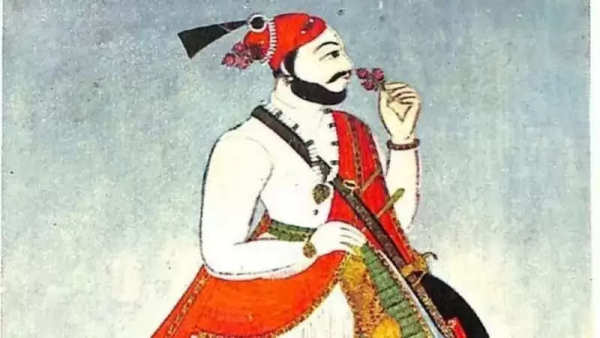
Sambhaji, the eldest son of Chhatrapati Shivaji Maharaj, faced a life of immense challenges, betrayal, and an eventual tragic end. Born in 1657, Sambhaji was just two years old when his mother passed away, leaving him to be raised by his father and grandmother Jijabai.
Sambhaji accompanied Shivaji during some of the most crucial events in Maratha history. He was by his father’s side when the Mughals imprisoned Shivaji in Agra and during their daring escape. Sambhaji's upbringing included rigorous education, with a special focus on Sanskrit, a language in which he achieved great proficiency.
In 1670, Shivaji’s wife Soyarabai gave birth to a son named Rajaram. While Shivaji’s coronation in 1674 naturally positioned Sambhaji as his successor, Soyarabai harbored ambitions to see her own son take the throne. This internal rivalry created a growing tension within the family.
Sambhaji’s grandmother Jijabai, his most steadfast supporter, passed away in the same year as Shivaji's coronation. Following her death, allegations of Sambhaji’s misconduct started to emerge, many of which were allegedly spread by Soyarabai to tarnish his reputation.
On December 13, 1678, Sambhaji made a shocking decision. At the age of 21, he left Satara and aligned himself with Diler Khan, the Mughal governor. Although the reasons for Sambhaji’s departure remain unclear, historians speculate that it stemmed from dissatisfaction with his treatment within the family.
At first, Diler Khan appeared to treat Sambhaji with respect, but their alliance began to crumble due to the Mughal leader’s brutal treatment of civilians during military campaigns. Sambhaji, who was influenced by Shivaji’s humane policies, grew disillusioned with Diler Khan's cruelty.
Sambhaji eventually realized that his relationship with the Mughals was unsustainable. On November 20, 1679, he fled the Mughal camp with his wife Yashubai, disguising her as a man for their escape. By December 4, Sambhaji reunited with his father at Panhala Fort.
Although Shivaji welcomed him back warmly, the tension between them persisted. Sambhaji's rebellion had created significant instability in the Maratha Empire, and the issue of succession remained unresolved.
Shivaji passed away on April 3, 1680, at the age of 53. Despite the unresolved conflicts between father and son, Sambhaji ascended to the throne after his father’s death.
However, his reign began with controversy. Just a year after becoming king, Sambhaji ordered the execution of his stepmother Soyarabai, accusing her of plotting to poison Shivaji. Historians suggest that this was more likely an act of revenge for her attempts to undermine Sambhaji’s claim to the throne.
Aurangzeb launched a massive campaign in southern India to crush all resistance, targeting Sambhaji and the Maratha Empire. In 1689, Sambhaji was captured at Sangameshwar in Ratnagiri by Mughal forces.
Sambhaji was subjected to unimaginable torture after his capture. Aurangzeb offered him clemency on the condition that he convert to Islam, but Sambhaji refused. In retaliation, the Mughals gouged out his eyes, pulled out his tongue, and inflicted brutal punishment over 15 days.
Finally, on March 11, 1689, Sambhaji was executed. His body was dismembered, and his severed head was paraded across southern India as a warning to others who opposed Mughal rule.
Following Sambhaji’s death, his younger brother Rajaram was declared king. However, the Maratha struggle against Aurangzeb did not end. Rajaram’s wife, Tarabai, continued the resistance after Rajaram's death in 1699, proving that the Maratha spirit of defiance could not be extinguished.
The story of Sambhaji’s life reflects the turbulence of his era—a time of familial betrayal, relentless warfare, and an unyielding fight for independence. Despite his tragic end, Sambhaji remains a symbol of unwavering courage and defiance against oppression.
Image Credit- DR. KAMAL GOKHALE